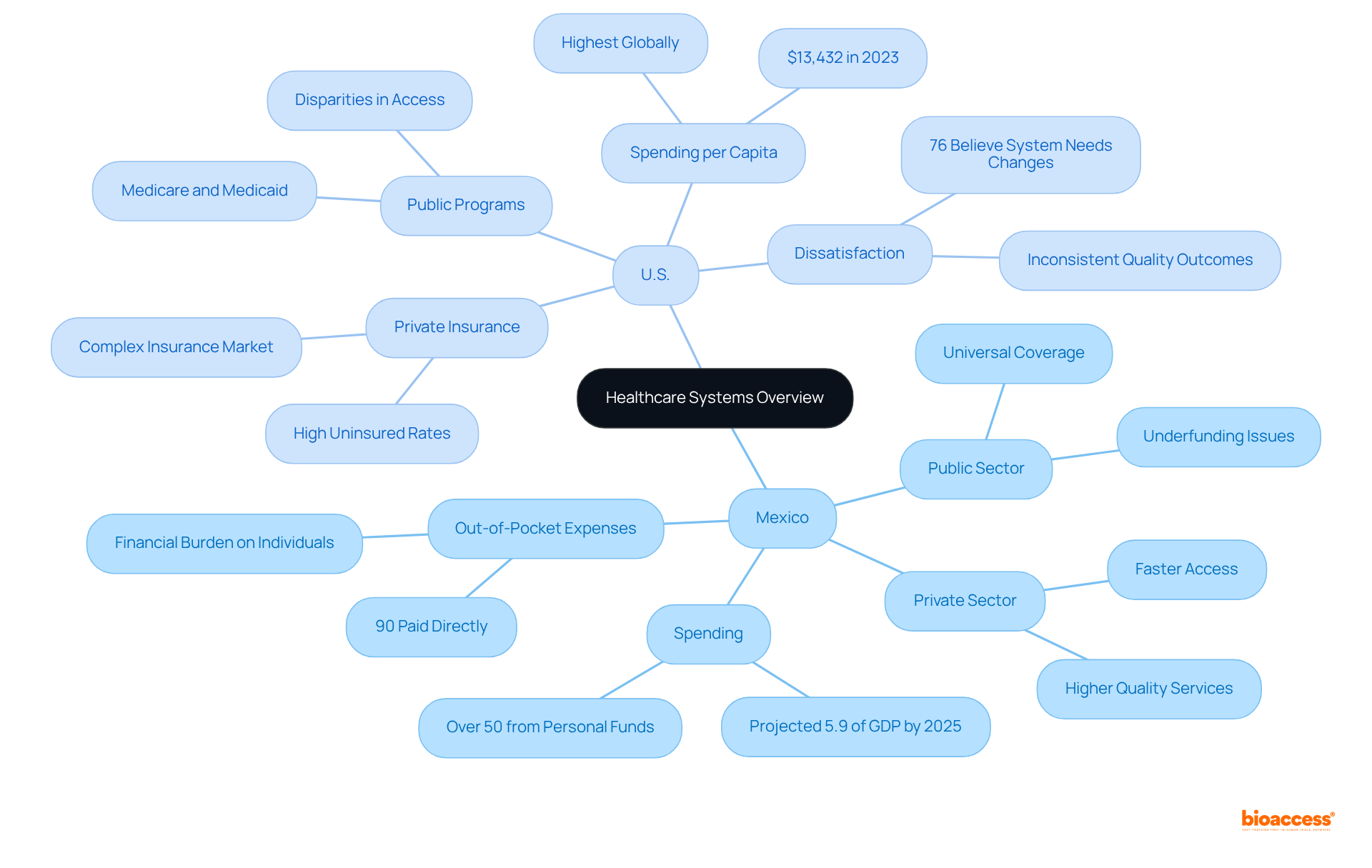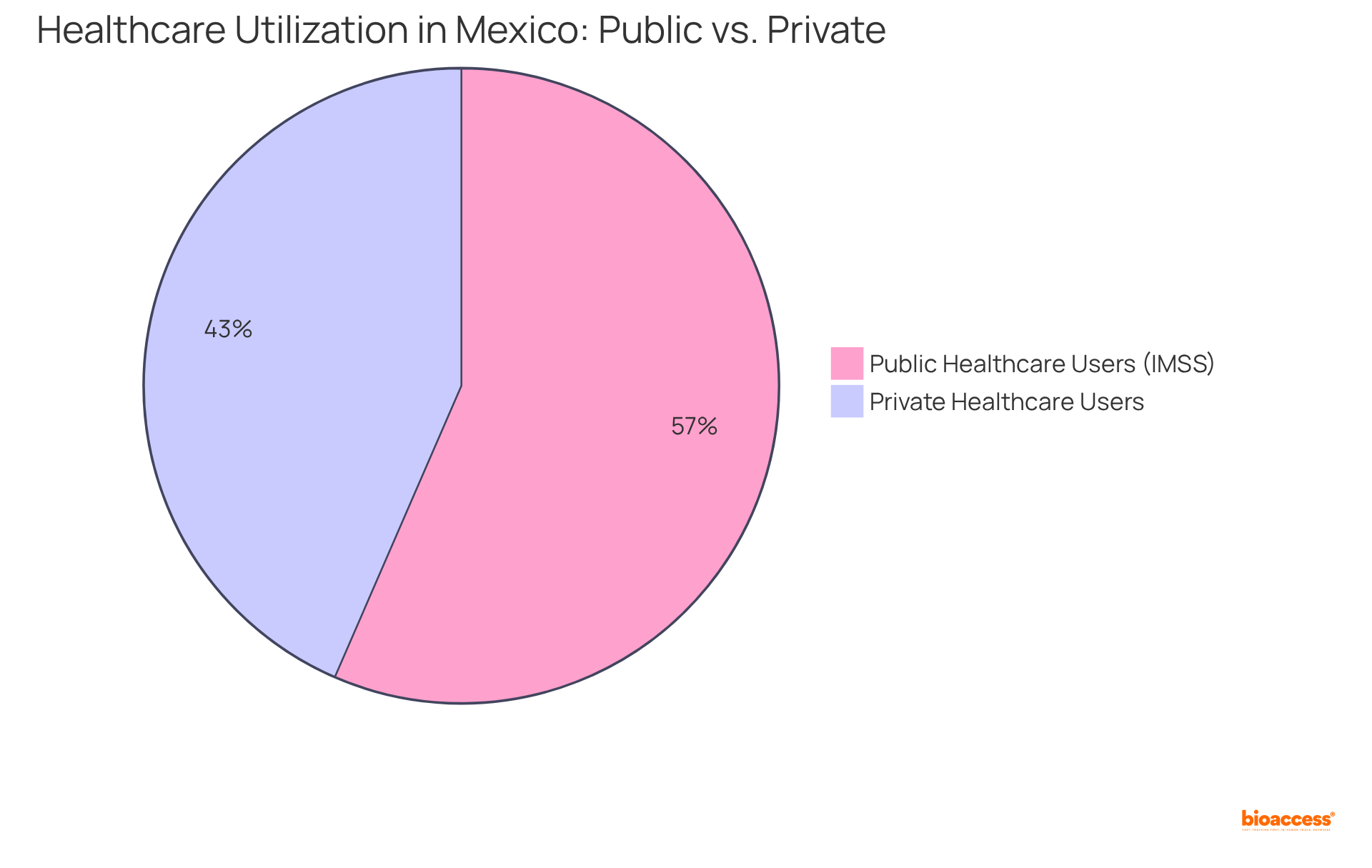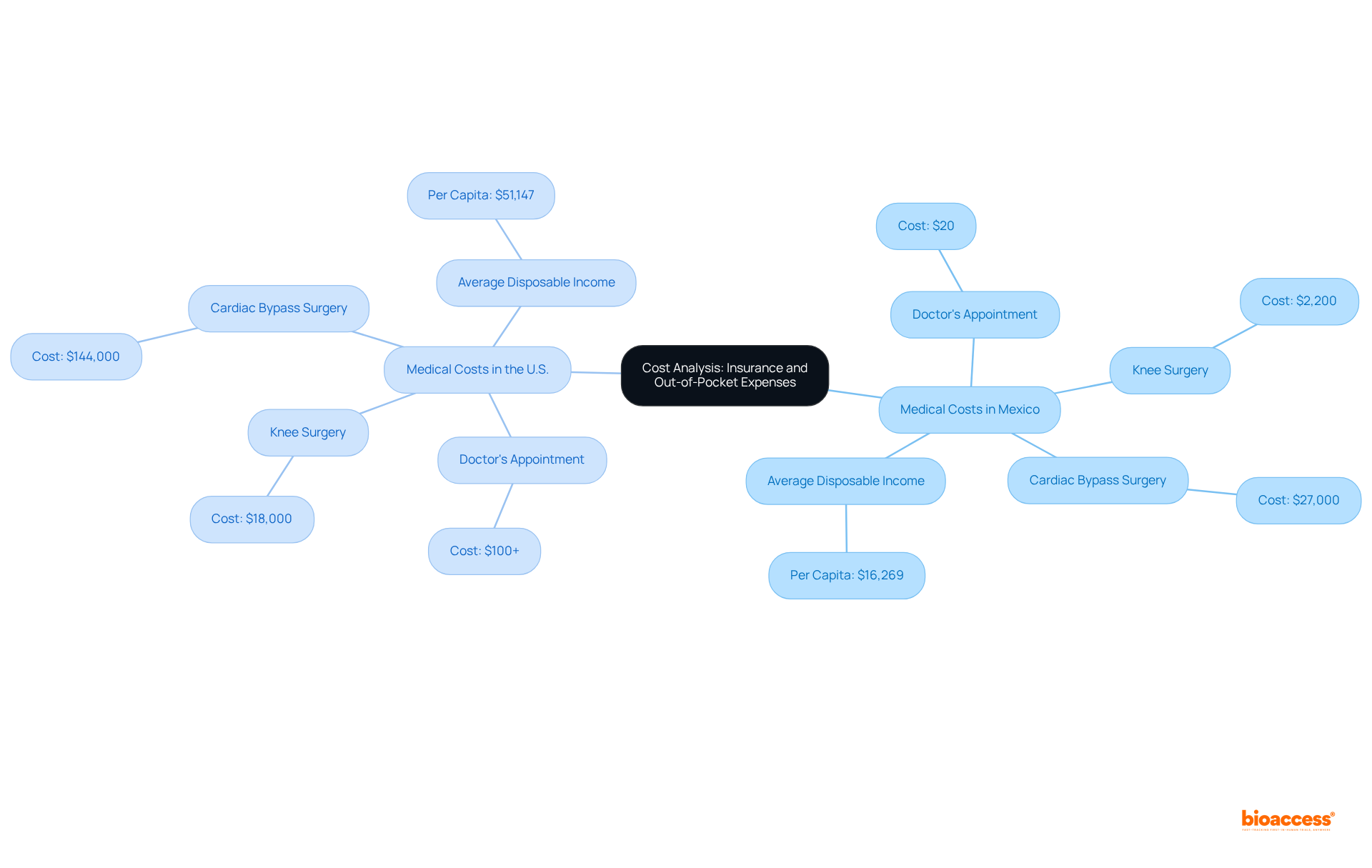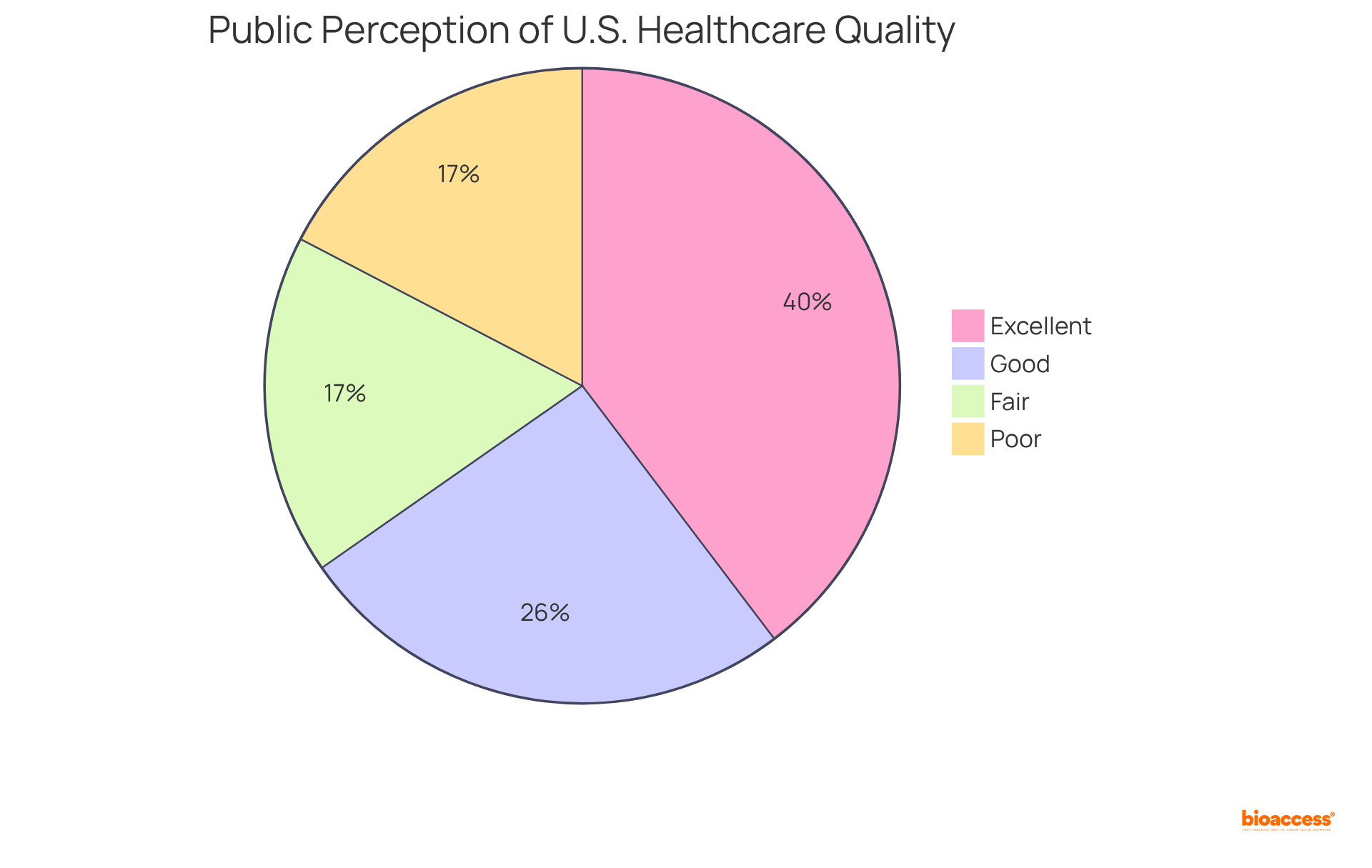


This article provides a critical comparison of healthcare systems in Mexico and the United States, emphasizing the significant differences in cost and accessibility. Mexico's healthcare system is characterized by lower costs and a burgeoning private sector, in stark contrast to the U.S. system, which is marked by high spending and notable disparities in access and quality. Evidence supporting this comparison includes:
This highlights the complexities and challenges that both nations face in delivering effective healthcare.
The healthcare systems in Mexico and the United States present a complex tapestry of public and private options, each characterized by distinct strengths and weaknesses. As medical costs escalate and access to quality care emerges as a critical concern, it becomes increasingly vital to understand the nuances of these systems. This article explores the contrasting landscapes of healthcare in both nations, examining the implications of funding, patient experiences, and the financial burdens individuals face. What lessons can be gleaned from these differences, and how might they shape future reforms aimed at achieving better health outcomes for all?
The medical system in the country operates as a multifaceted structure, often likened to a three-layer cake. The public sector, primarily financed through taxation, aims to deliver universal coverage but frequently grapples with issues of underfunding and inefficiencies. In contrast, the commercial sector offers faster access and higher quality services, albeit at a greater cost. By 2025, spending on medical services in the country is expected to hit 5.9% of GDP, indicating persistent difficulties in financing and resource distribution. Notably, more than 50% of overall health spending in the nation comes from personal funds, signifying a considerable dependence on non-public medical alternatives, particularly in medical Mexico. Furthermore, approximately 90% of health expenditures in Mexico are paid directly out of pocket, highlighting the financial burden on individuals in terms of medical Mexico.
On the other hand, the American medical system is a complicated blend of public programs, like Medicare and Medicaid, in conjunction with a mainly private insurance market. This dual structure results in considerable disparities in access and quality of care. In 2023, U.S. health expenditures per capita reached $13,432, the highest globally. Yet, the country continues to face challenges, including high uninsured rates and inconsistent quality outcomes. Approximately 76% of Americans believe that the medical system requires fundamental changes, highlighting widespread dissatisfaction with the current model.
In summary, while the nation's medical system strives for universal coverage through a public framework, it is often complemented by a robust private sector that caters to those who can afford it. The U.S. system, characterized by its high spending and complex insurance landscape, reveals significant gaps in access and quality, underscoring the need for reform in both contexts.

In medical Mexico, the public medical system is overseen by several government organizations, most notably the Mexican Institute of Social Security (IMSS), which serves approximately 65% of the population. Despite this coverage, a significant number of citizens are opting for personal medical options in Mexico, primarily due to longer wait times and perceptions of lower quality in public facilities, leading to increased interest in medical Mexico.
Independent medical services in Mexico account for over fifty percent of care-seeking behavior, highlighting a substantial shift towards personal healthcare choices. The independent sector is experiencing considerable growth, with services increasingly mirroring those found in the United States, characterized by shorter wait times and more personalized care.
Conversely, the American medical system predominantly relies on individual insurance providers, which play a crucial role in determining access to care. While exclusive establishments in the U.S. often deliver high-quality services, the reliance on insurance can create barriers for individuals lacking adequate coverage, resulting in significant disparities in access to medical care and outcomes.
The Mexican independent medical sector, part of the broader medical Mexico landscape, is projected to grow at a compound annual growth rate exceeding 18% by 2030, indicating a transformation in patient preferences and a rising demand for accessible medical solutions. As noted by Doubova SV, public care visits received lower ratings compared to private care; at the population level, perceptions of inadequate quality may drive the use of private care, thereby increasing out-of-pocket expenses.
In 2019, out-of-pocket expenditures constituted 42.1% of total health spending in the country, underscoring the financial factors influencing medical decisions.

In a Latin American nation, healthcare expenses, particularly medical Mexico costs, are typically less than in the United States, with average out-of-pocket costs significantly reduced. In medical Mexico, a standard doctor's appointment costs about $20, whereas in America, the same appointment may exceed $100, depending on insurance coverage.
While the Mexican government offers various insurance options, many citizens still encounter high out-of-pocket costs, particularly for private care. In contrast, the American medical system is characterized by high insurance premiums and deductibles, with many individuals facing substantial out-of-pocket costs even with coverage.
The typical American allocates more than $13,000 each year on medical services, highlighting a stark difference compared to the more affordable medical Mexico options available in this nation. For instance, in medical Mexico, typical procedures like knee surgery cost roughly $2,200, compared to about $18,000 in the U.S. Furthermore, cardiac bypass surgery is priced at around $27,000 in medical Mexico compared to $144,000 in the U.S., illustrating the significant savings potential for patients seeking medical care abroad.
Medical economists emphasize that these reduced expenses not only enhance access to services but also foster medical tourism in Mexico, as evidenced by the fact that up to 3 million individuals from around the world visited this nation for medical or dental treatment in 2020. Additionally, medical Mexico has expenses that are approximately 50% less than in the United States, making it an attractive option for those seeking quality treatment at a lower cost.
The typical disposable income per person in that country is $16,269, considerably less than the $51,147 in the United States, further underscoring the affordability of medical services relative to income levels.

The quality of care in medical Mexico has undergone significant improvements, particularly within private hospitals, which now deliver services that often meet or exceed American standards. Conversely, public medical facilities in medical Mexico frequently struggle with overcrowding and resource limitations, resulting in inconsistent patient outcomes. Meanwhile, the American healthcare system, despite its advanced technology and specialized care, is increasingly scrutinized due to exorbitant costs and unequal access. Recent data indicates that the United States lags behind comparable nations in life expectancy, averaging 77.5 years compared to 82.2 years in peer countries, alongside overall health outcomes, despite spending nearly double per capita on medical services. Alarmingly, only 48% of Americans rate the quality of U.S. healthcare as excellent or good, reflecting a widespread dissatisfaction that highlights the complexities surrounding healthcare quality and access in both nations. This paradox underscores the necessity for continuous evaluation and reform.

The examination of healthcare systems in Mexico and the United States reveals significant contrasts in structure, cost, and quality of care. Mexico's system aims for universal coverage through a public framework, increasingly supplemented by a burgeoning private sector that caters to those seeking faster and higher-quality services. Conversely, the U.S. healthcare landscape, characterized by its high spending and reliance on private insurance, exposes deep disparities in access and quality, calling for urgent reforms to address these systemic issues.
Key insights from this comparison highlight that Mexico's healthcare expenses are considerably lower than those in the U.S., making medical services more accessible despite the challenges of underfunding in the public sector. The growth of the independent medical sector in Mexico signifies a shift in patient preferences, as individuals increasingly seek personalized care options. In the U.S., the complexities of insurance and high out-of-pocket costs continue to hinder access, with many Americans expressing dissatisfaction with the quality of care available.
Reflecting on these findings underscores the need for a critical evaluation of both healthcare systems. As individuals consider their options for medical care, the disparities in costs and quality between Mexico and the United States present an opportunity for informed decision-making. Embracing the lessons learned from this comparison can lead to better healthcare outcomes for all, emphasizing the importance of accessibility, affordability, and quality in achieving a more effective healthcare system.
What is the structure of the healthcare system in Mexico?
The healthcare system in Mexico operates as a multifaceted structure, often described as a three-layer cake, consisting of a public sector aimed at universal coverage, a commercial sector offering faster access and higher quality services, and a significant reliance on personal funds for health expenditures.
What are the main challenges faced by the public healthcare sector in Mexico?
The public healthcare sector in Mexico frequently grapples with issues of underfunding and inefficiencies, which hinder its ability to deliver universal coverage effectively.
How much of Mexico's health spending comes from personal funds?
More than 50% of overall health spending in Mexico comes from personal funds, indicating a significant dependence on non-public medical alternatives, especially in medical Mexico.
What percentage of health expenditures in Mexico is paid out of pocket?
Approximately 90% of health expenditures in Mexico are paid directly out of pocket, highlighting the financial burden on individuals seeking medical care.
How does the American healthcare system differ from Mexico's?
The American healthcare system is a complex blend of public programs, such as Medicare and Medicaid, and a predominantly private insurance market, leading to disparities in access and quality of care, unlike Mexico's more straightforward public-private structure.
What was the per capita health expenditure in the U.S. in 2023?
In 2023, U.S. health expenditures per capita reached $13,432, making it the highest globally.
What challenges does the U.S. healthcare system face?
The U.S. healthcare system faces challenges such as high uninsured rates and inconsistent quality outcomes, which contribute to widespread dissatisfaction among the public.
What do Americans think about the current medical system?
Approximately 76% of Americans believe that the medical system requires fundamental changes, indicating significant dissatisfaction with the current model.
What does the summary of healthcare systems in Mexico and the U.S. highlight?
The summary highlights that while Mexico's medical system strives for universal coverage through a public framework, it relies heavily on a robust private sector, whereas the U.S. system, characterized by high spending and a complex insurance landscape, reveals significant gaps in access and quality, underscoring the need for reform in both contexts.